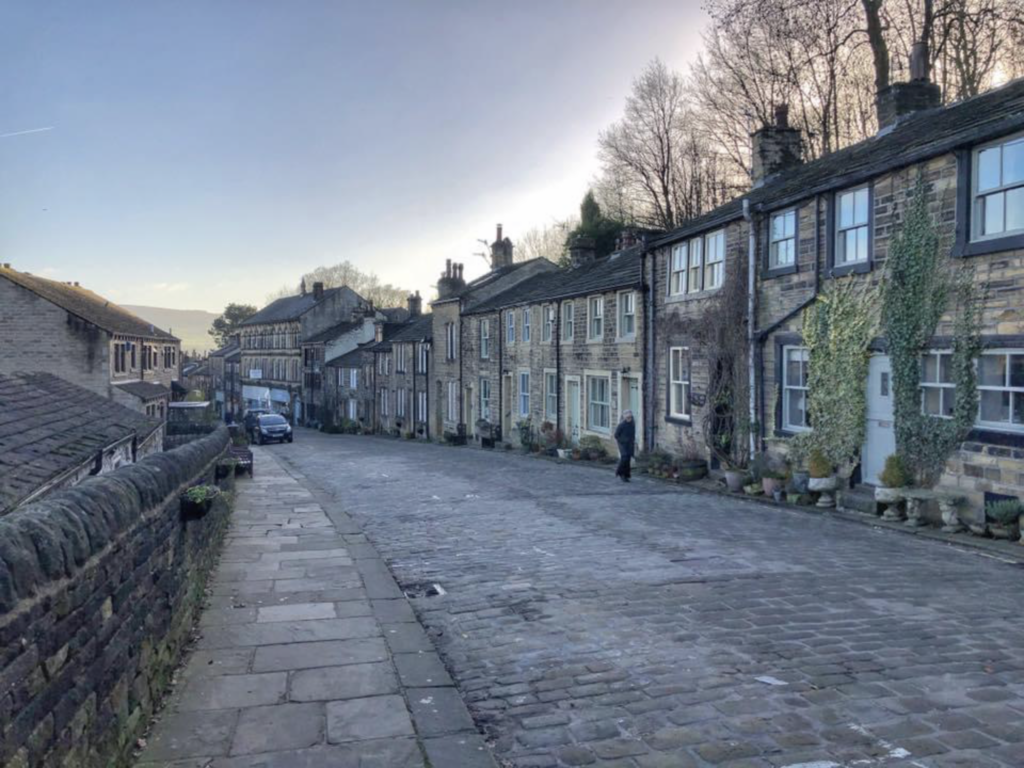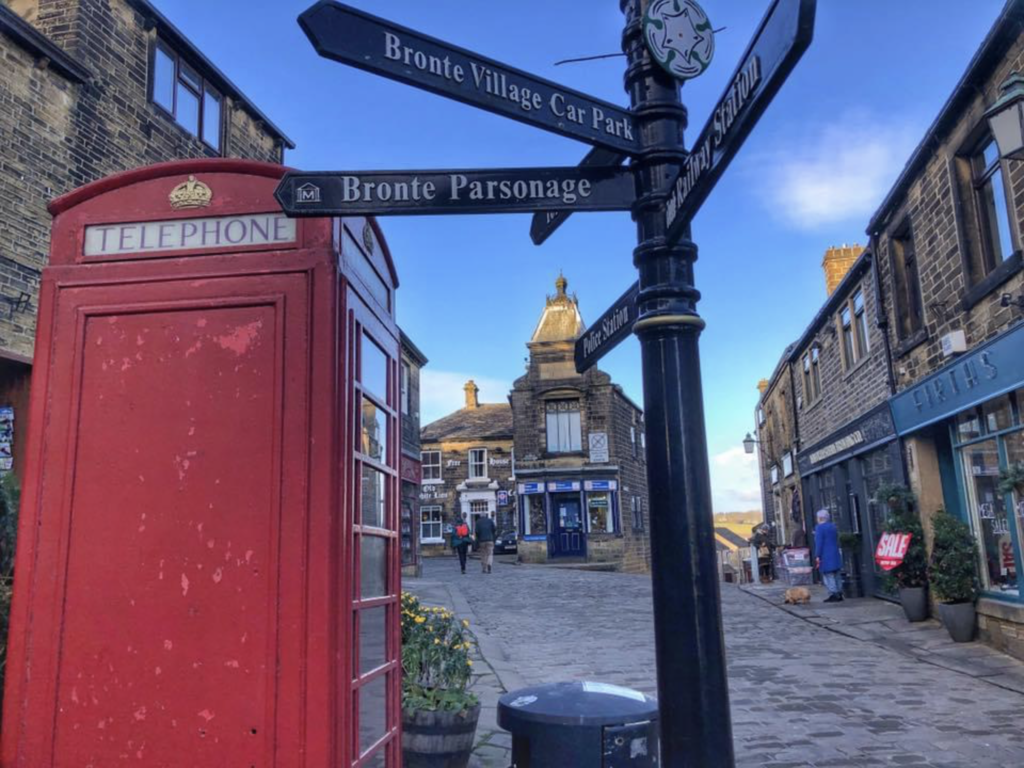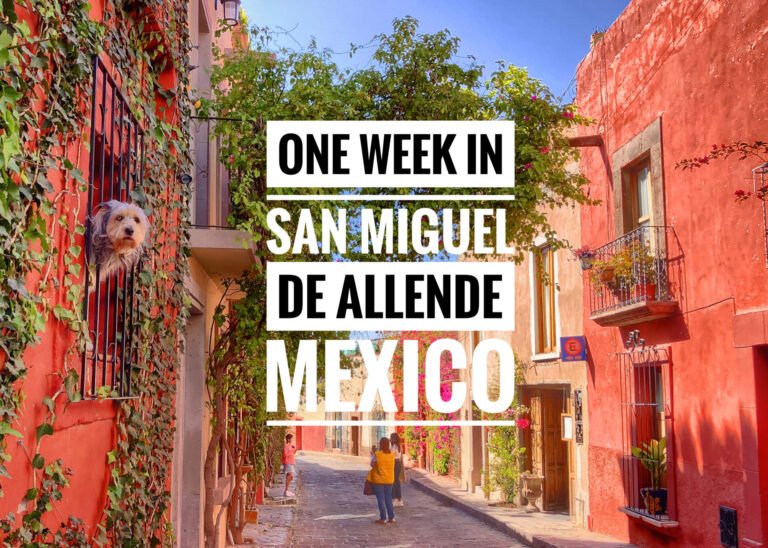
As we were pushing to the limit of our legally alotted time in the European Schengen Zone (90 days within 180), we opted to head to the U.K. earlier than we anticipated, and just a day before New Years Eve we touched down in Manchester. But what to do for New Year’s in Manchester? So, we hopped a quick 1 hour bus from Manchester to Liverpool to seek out a little Beatlemania.
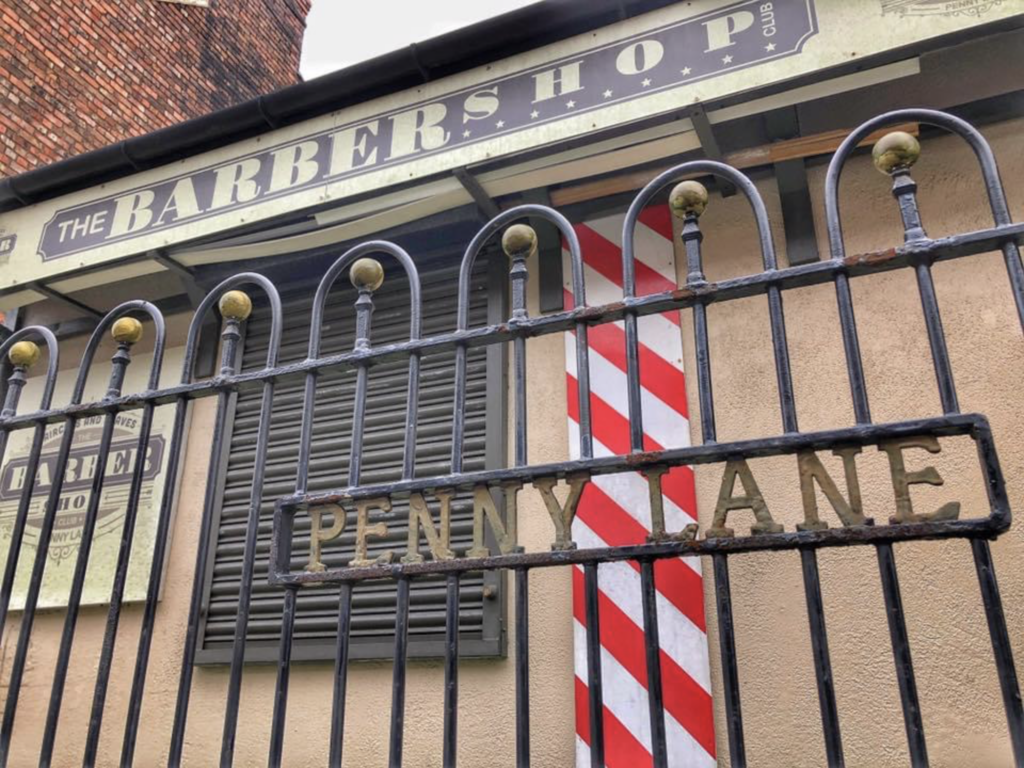
Beatlemania in Liverpool
To keep our meager daily budget in check, we opted to create our own self-guided neighborhood walking tour in Liverpool. Taking in some Fav Four history, and getting in a few steps of the Liverpool streetscapes. First up, the infamous Penny Lane…The barber showing photographs. While the song is called “Penny Lane” and is a road in Liverpool, the song is really a reference to the Penny Lane Bus Station, which is now gone, next to “The shelter in the middle of the roundabout” (now the Sgt. Peppers bistro). When the boys were young they used to meet at this bus station as it was a hub to get them anywhere else they wanted to go and was centrally located to all of them. (Songfacts.com)
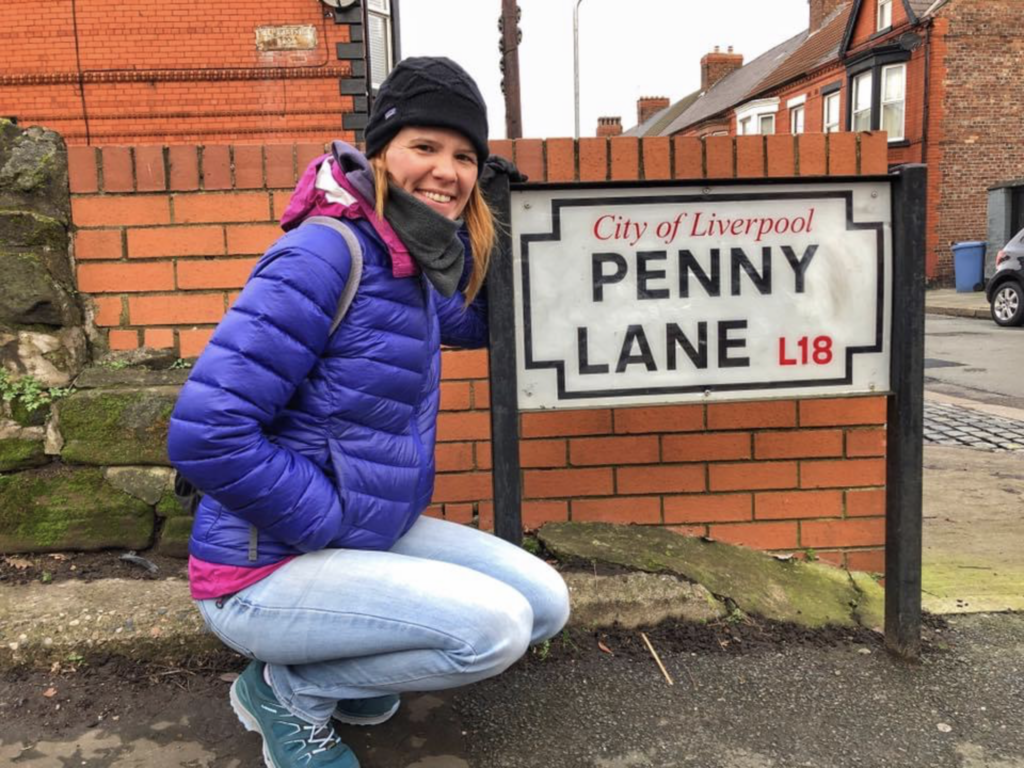
Mandy in front of one of the permanent signs. Formerly, these were normal street signs on buildings, but naturally they were routinely stolen shortly after the song’s release by fans. Penny Lane is incidentally named after James Penny. A public effort was undertaken a few years ago by the city of Liverpool to rename streets that were associated with former slave traders and owners. Research uncovered that James Penny was in fact an 18th century slave owner… leading town councilors into quite a dilemma. In the end, since the Beetles made Penny Lane into such a hugely iconic street and cultural tourist attraction, the city leaders decided to leave the street name as is.
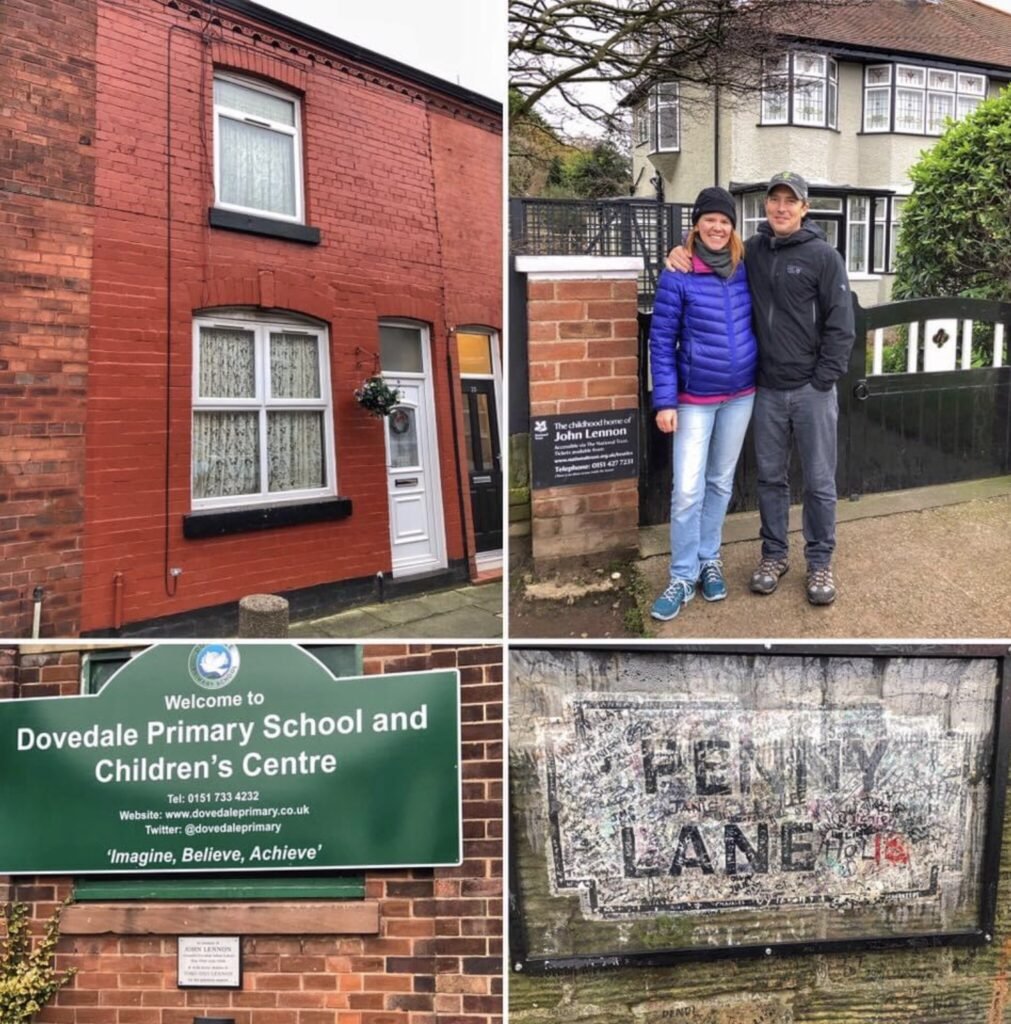
Next stop, top left: George Harrison’s childhood home, which is (amazingly!) still a private residence. No gift shop, no cafe. While there, we met the home’s friendly next door neighbor, who walked by us and made sure to point out the home’s formerly famous occupant. He clearly has made amends with the fact that hoards of tourists strut selfie sticks regularly outside his window. That must be odd. This was considered “government-subsidized housing” as were Paul and Ringo’s early homes. Then, off to (top right) the childhood home of John Lennon. Now a National Trust building and preserved by the government.
(Bottom left) stopping by John Lennon’s primary school and (bottom right) the original Penny Lane sign.
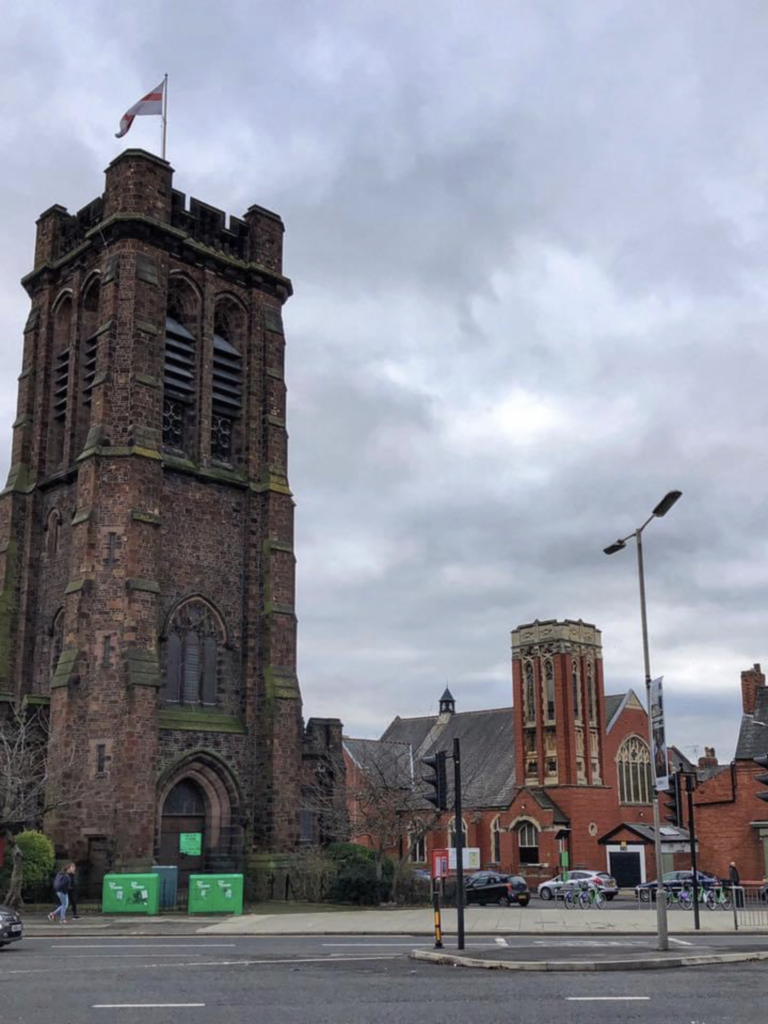
On to, St. Peter’s Church, which played a pivotal role in Beatles history. It is the place where John Lennon first met Paul McCartney in 1957. John was playing there with his skiffle* group, the Quarrymen. They were playing for a “Garden Fete and Rose Queen Crowning” and it cost 2 shillings. (*Skiffle: a 1950’s Folk music which often incorporated improvised instruments like washboards.)
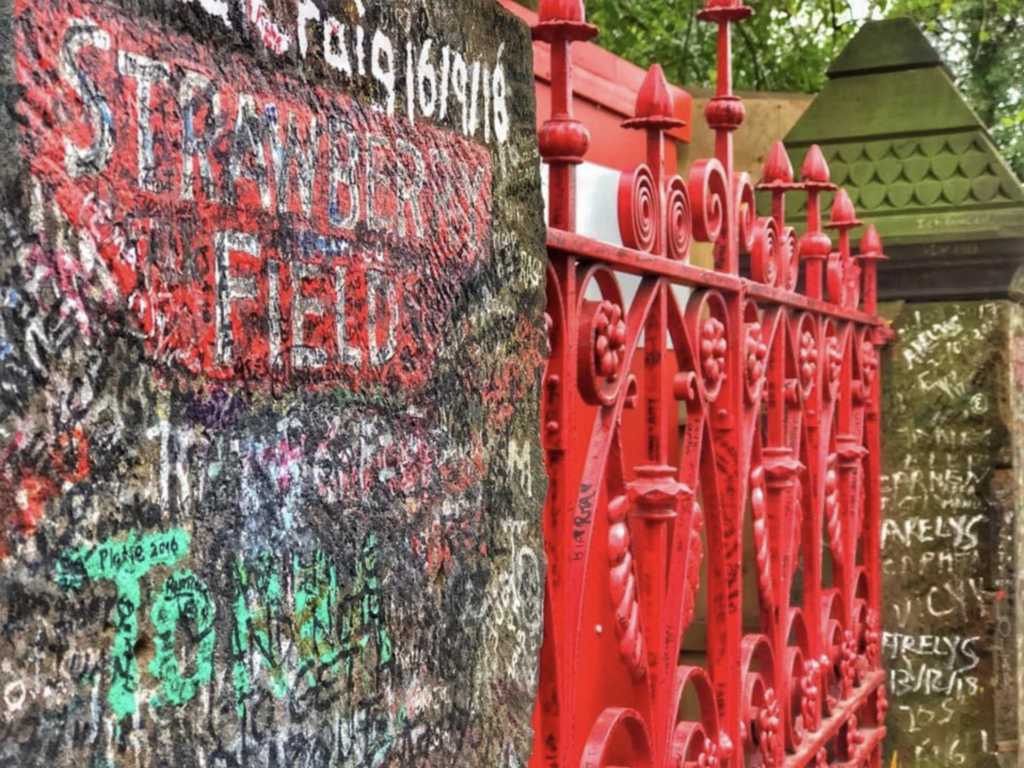
Down the road to, the gate of Strawberry Fields, formerly a Salvation Army home where John Lennon used to go. He had fond memories of the place that inspired this song. In 1984, Lennon’s widow Yoko Ono donated $375,000 to the home.

And lastly, just as the sun was setting we came to the graveyard that held the tombstone of Eleanor Rigby at St. Peter’s Church. Although, the song reference was based on conversations young McCartney had with ladies in his church, the details were pulled together from various sources. Most interestingly, the name Eleanor Rigby did not come from this tombstone like everyone assumes. “Eleanor” was an actress from their 1965 movie “Help” and “Rigby” was from a store in Bristol. Shortly after the song was released, someone pointed out the grave in Paul’s very own childhood church. Eerie coincidence?
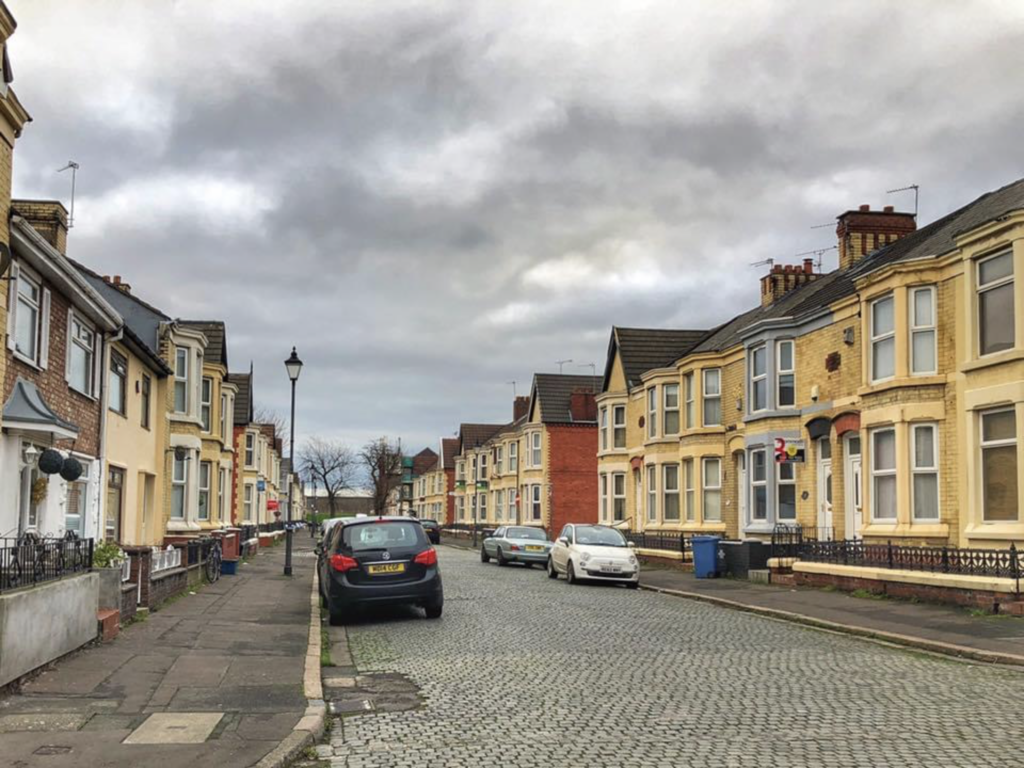
Our street for two nights in Liverpool.
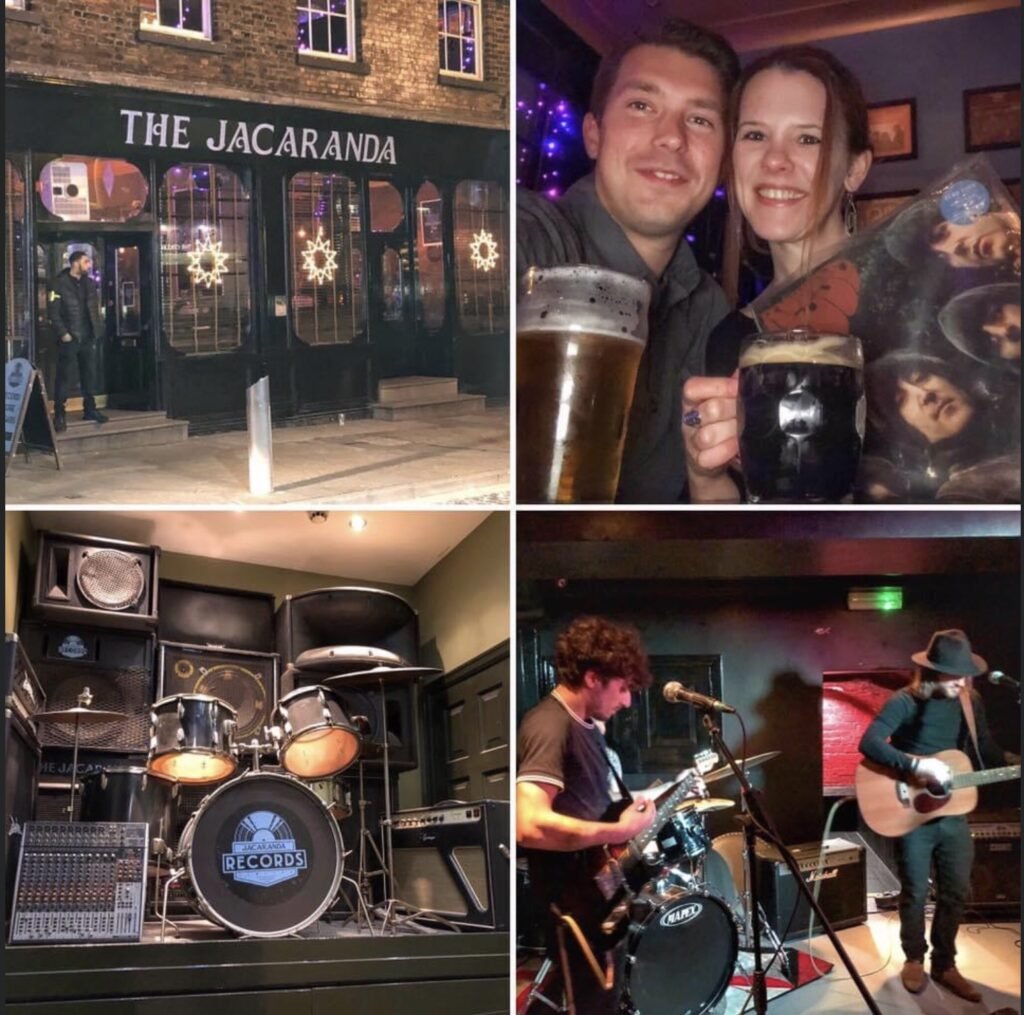
For New Year’s Eve, we wanted to head to the Cavern Club which is famous as being the “birthplace of the Beatles,” but it was sold out so we settled for the Jacaranda Club, known by locals as “the Jac,” which was also steeped with Beatles history. In 1960, the five founding members of the Beatles (John, Paul, George, Pete and Stuart) played here and were heard by their first manager. Although we didn’t get to hear the Beatles, there was a cover band playing some of their songs that night. It ended up being a pretty amazing choice to kick off 2019!

After staying up til 1:30 (wow, we actually made it for once although part of that was a 45 min. Walk back to our Airbnb), it was time to head eastward the next day for our jaunt into the English countryside. On the train, someone had placed this sticker on our seat. The first of many reminders that the U.K. is in as big of a political cluster with Brexit, as the U.S. is right now.

Colne, UK
And, our home for the next ten days… in Colne, England. In east Lancashire County, this is probably not on the travel radar for most people but we were lucky enough to be invited into the beautiful home of Mandy’s friends’ parents. This lovely 1920’s stone building mansion was formerly a cottage hospital but was saved from neglect and collapse by repurposing it into wonderfully restored apartments. Sue and Pete, our gracious hosts, lived on the bottom floor. The beautifully historic mosaic floor at the entrance in the foyer reminded you of the amazing craftsmanship that once went into building this “simple” cottage hospital.

The small town of Colne sits on a bluff, rising above undulating green hills, valleys, and abundant streams. Sheep and farms dot the hillsides in all directions. Sitting in this reading nook at our mansion home, with the most idyllic English countryside view that really just made us go, ahhhh. Especially on the grey days which were a little less blissful. Yes, we are in England in January…
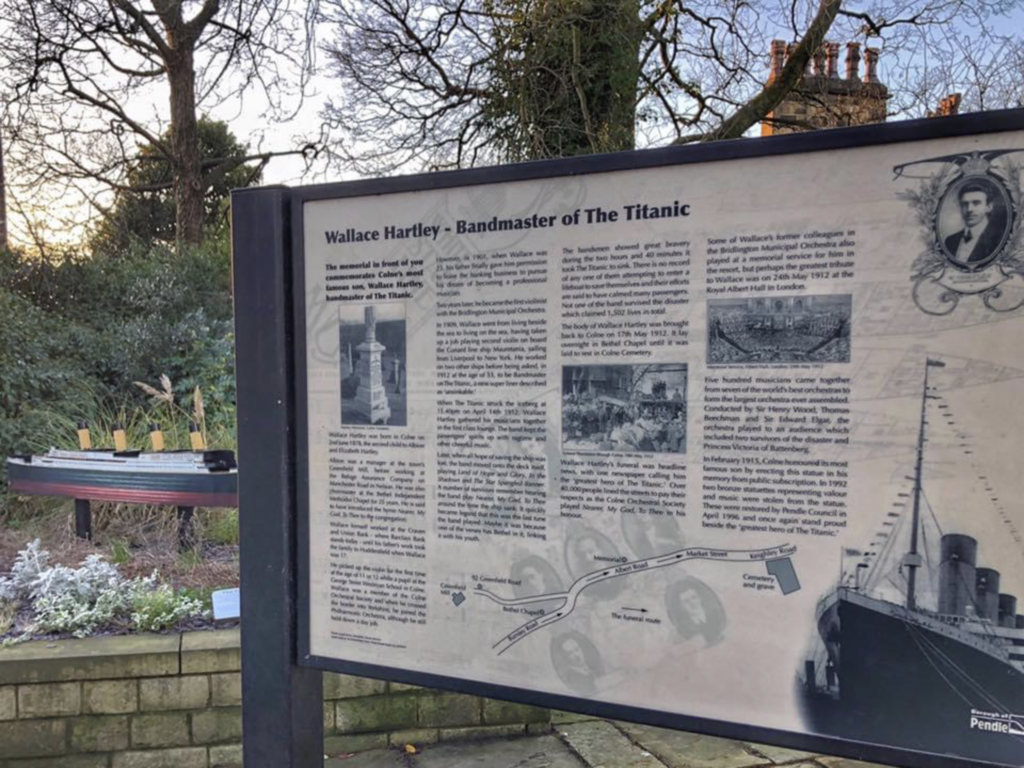
A notable person born and raised in Colne was Wallace Hartley, the bandleader on board the Titanic (yes, the guy in the movie who notably tried to “keep everyone calm” with classical tunes as the ship was submerging into the icy Atlantic.) A memorial to him is near the Colne Library.

At every sun break possible, we raced outside to those green undulating hills to do our best to soak in the natural beauty. One of the incredible things about England is pretty much being able to step off your doorstep to walk anywhere you want. In fact, it is English law that private landowners cannot restrict the public right-of-way to walk through their open fields and land. As a result of this law, there are “Public Footpaths” all over the countryside, crisscrossing in every direction, and sometimes going for dozens or hundreds of miles. Often, there are different types of gates built into the stone walls as you cross between lands… the aptly named “kissing gates”, were fun to run into.
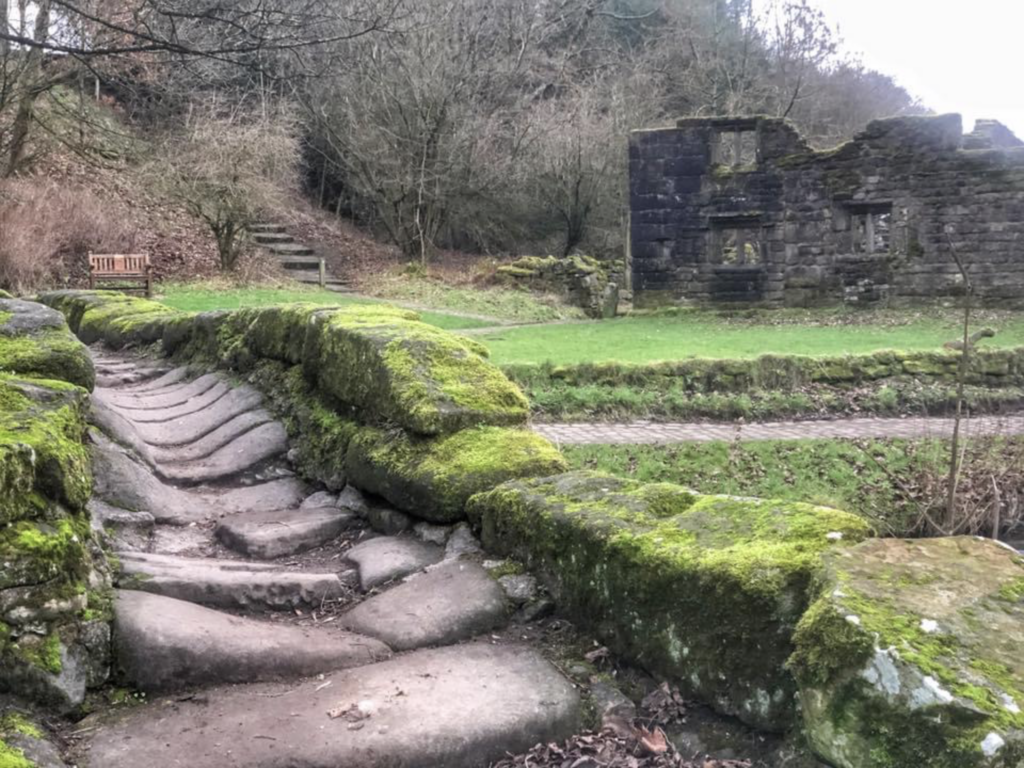
On one walk, we set off to the hamlet of Wycoller from our doorstep in Colne. A hamlet, by the way, is “a small settlement, generally one smaller than a village, and strictly (in Britain) one without a church.” Part of the stone footpath we took as we entered the hamlet, and came upon Wycoller Hall.
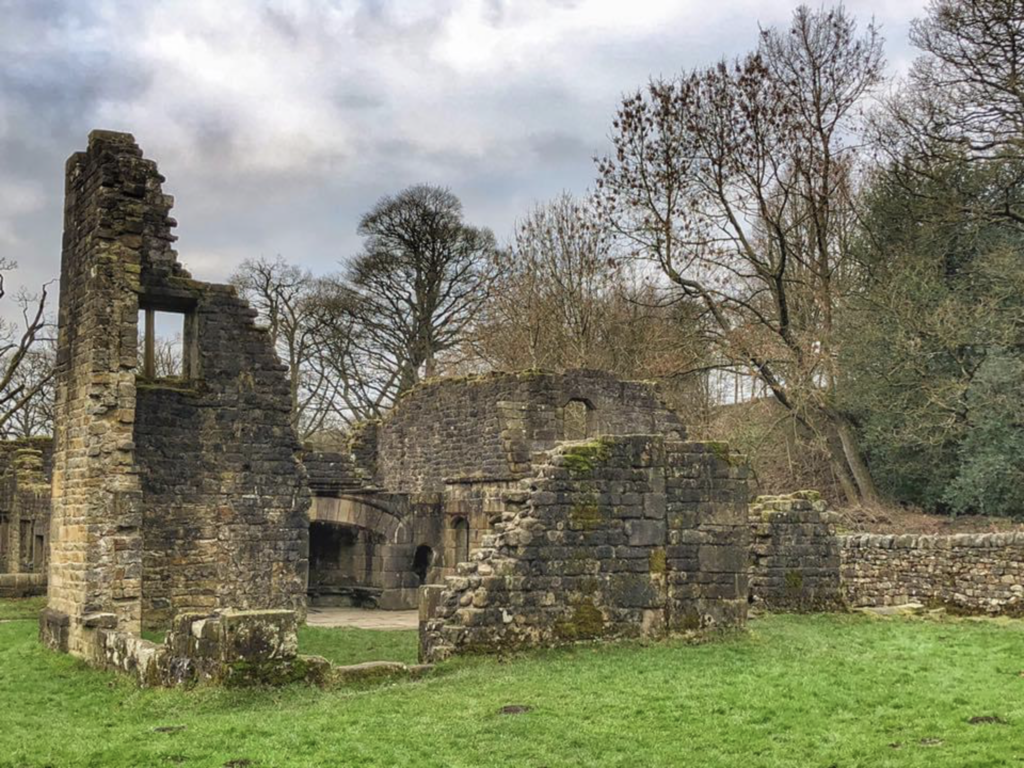
Wycoller Hall was a late 16th Century manor house. The dining hall was the center of a sizable estate but has obviously since fallen into ruins.
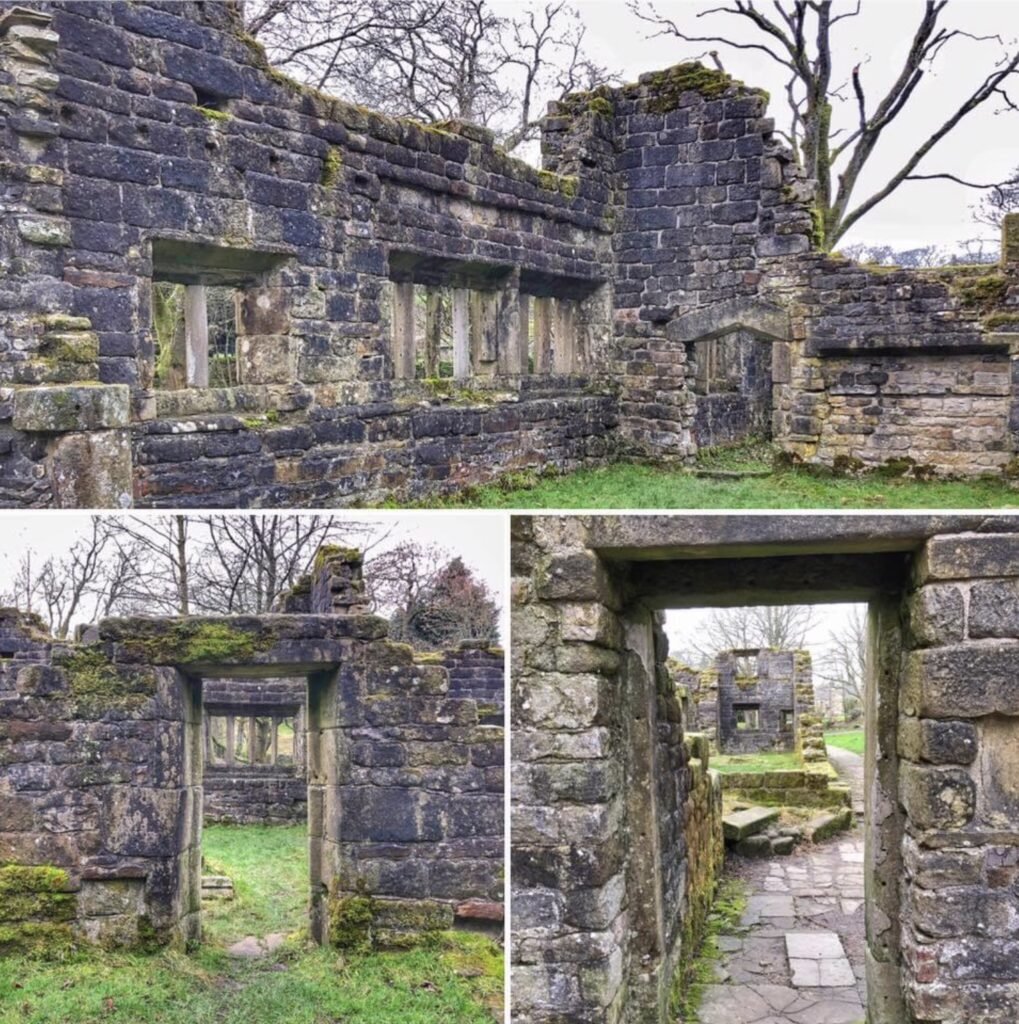
Other views of Wycoller Hall. Wycoller Is a historic settlement dating to 1000 BC. It has close links with the Brontes, and Charlotte is thought to have been a frequent visitor.
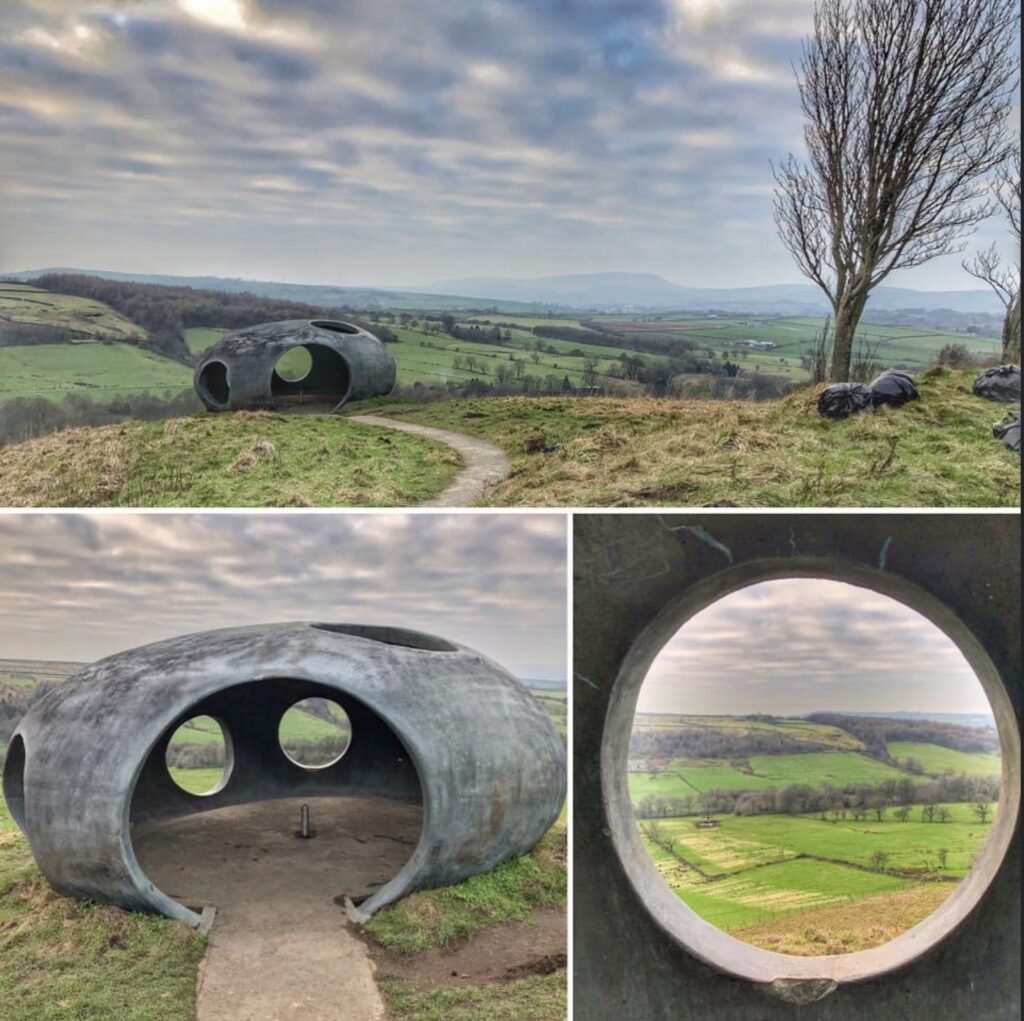
Also near Wycoller was Pendle’s ”Panopticon,” Atom, contemporary landscape artwork that creates a startling, but oddly eye-catching, concrete distraction to draw you into the gorgeous landscape.
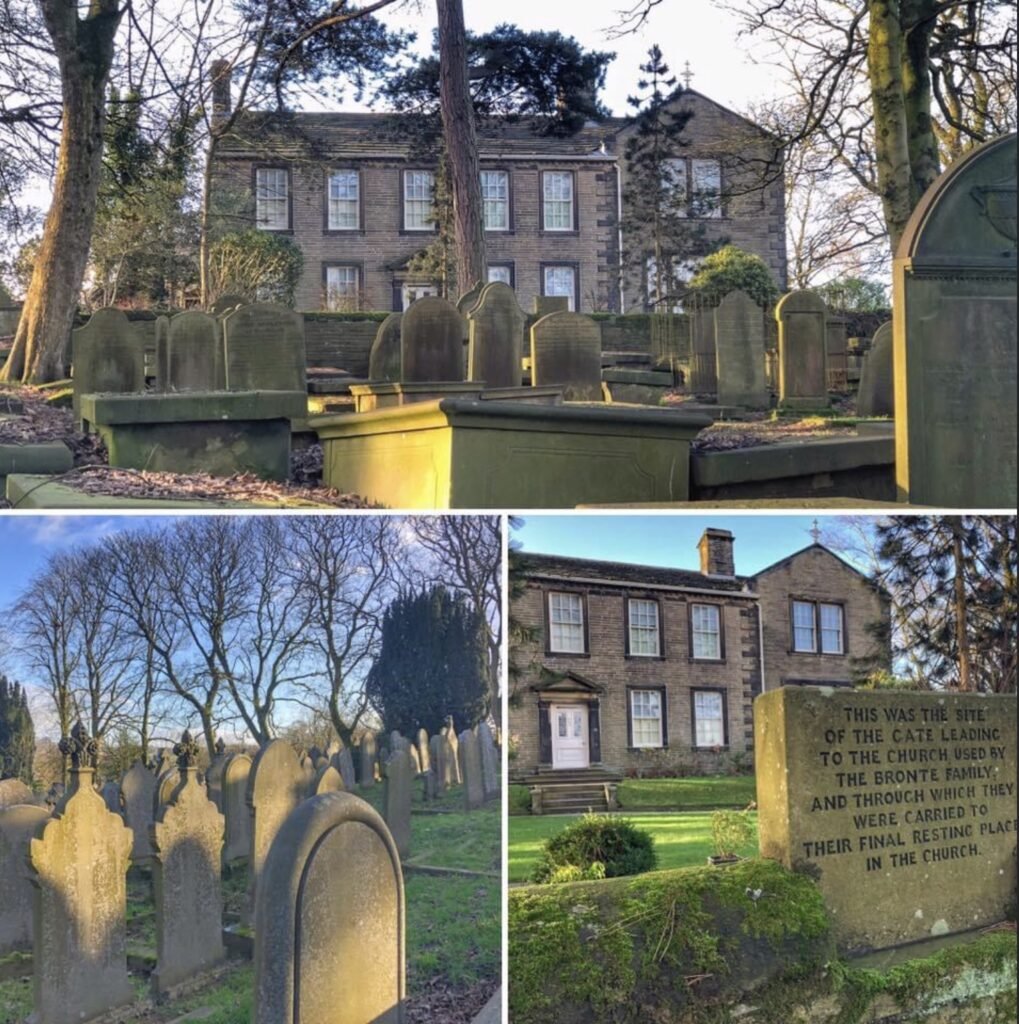
Haworth
On a different day, the village of Haworth, most known as the home of the Bronte sisters. In the mid 1800’s, literary masterpieces like Jane Eyre and Wuthering Heights were created within this parsonage, within a stone’s throw away from the school where the sisters taught and the church where they worshipped.
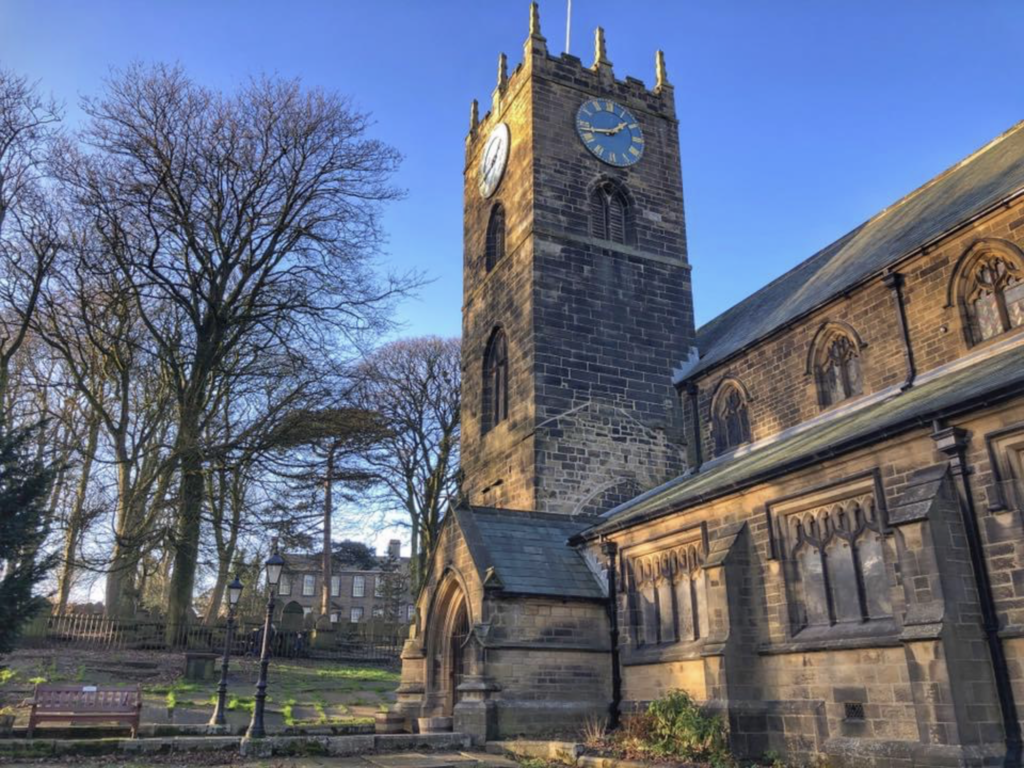
The church where the Bronte sisters are buried. All of them sadly died an early death, many of tuberculosis.
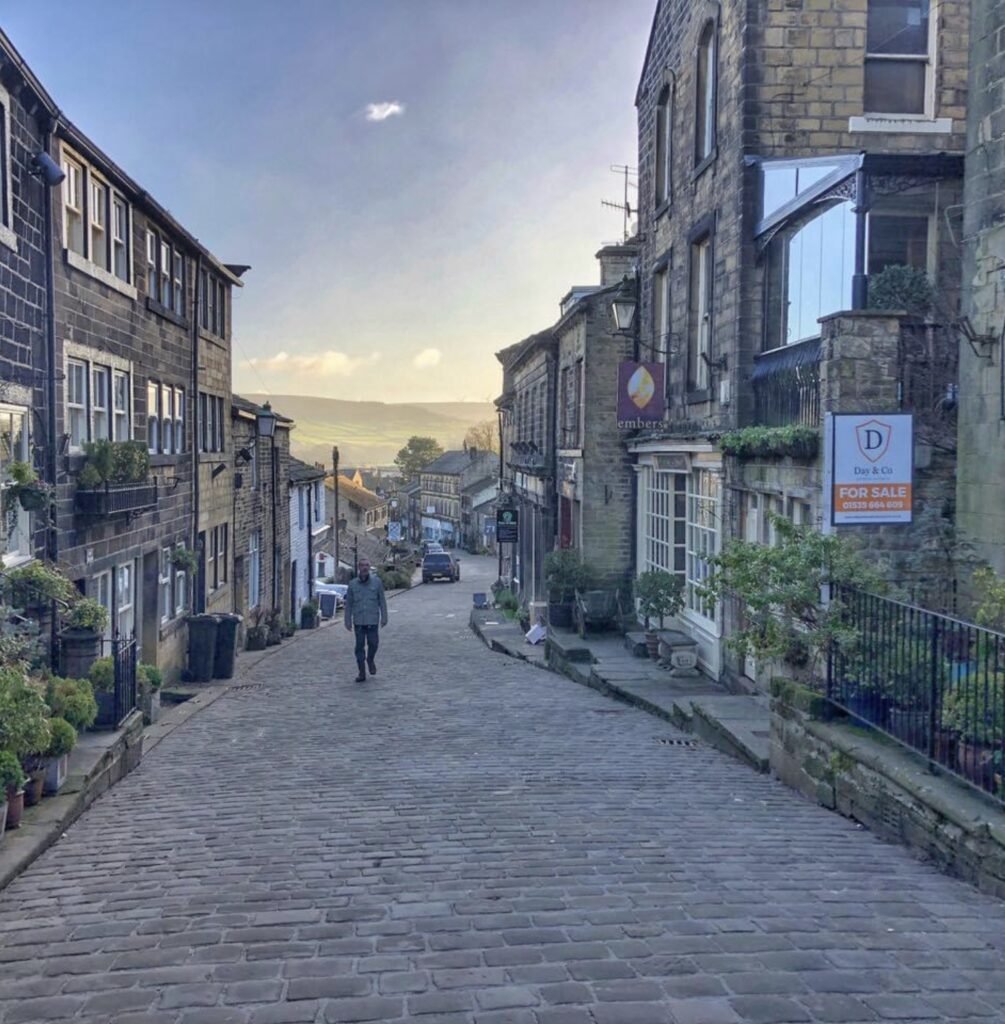
The village of Haworth is simply saturated with English charm. Sue and Pete told us these streets were covered with tourists in summer which made us feel fortunate to be experiencing it on our own. In January.
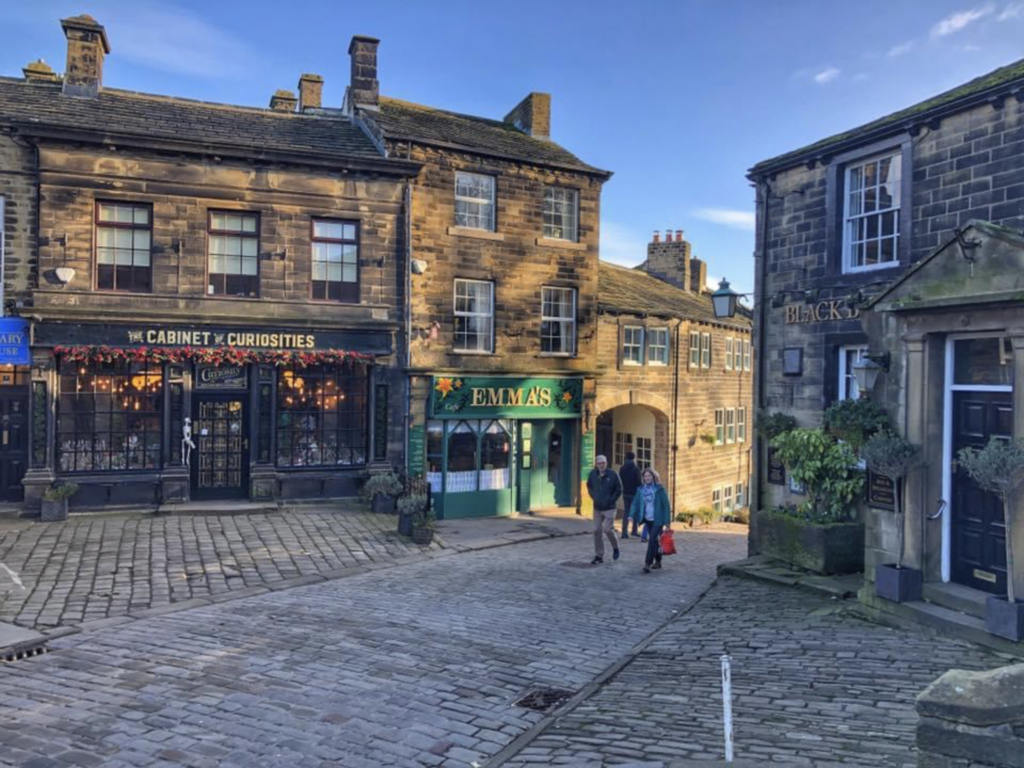
Another shot of Haworth. Haworth was first mentioned as a settlement in 1209.
So fun to imagine the Brontes strolling these streets!

Inside the Cabinet of Curiosities, a fun gift shop in a former apothecary.
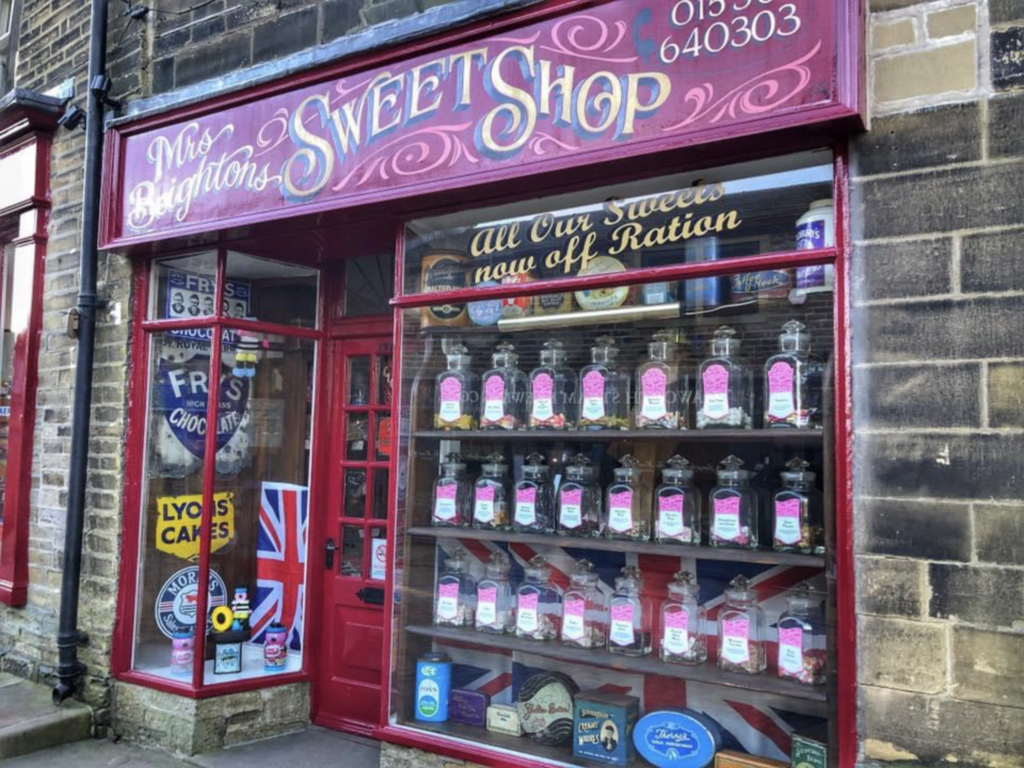
Sadly the Sweet Shop was not open…
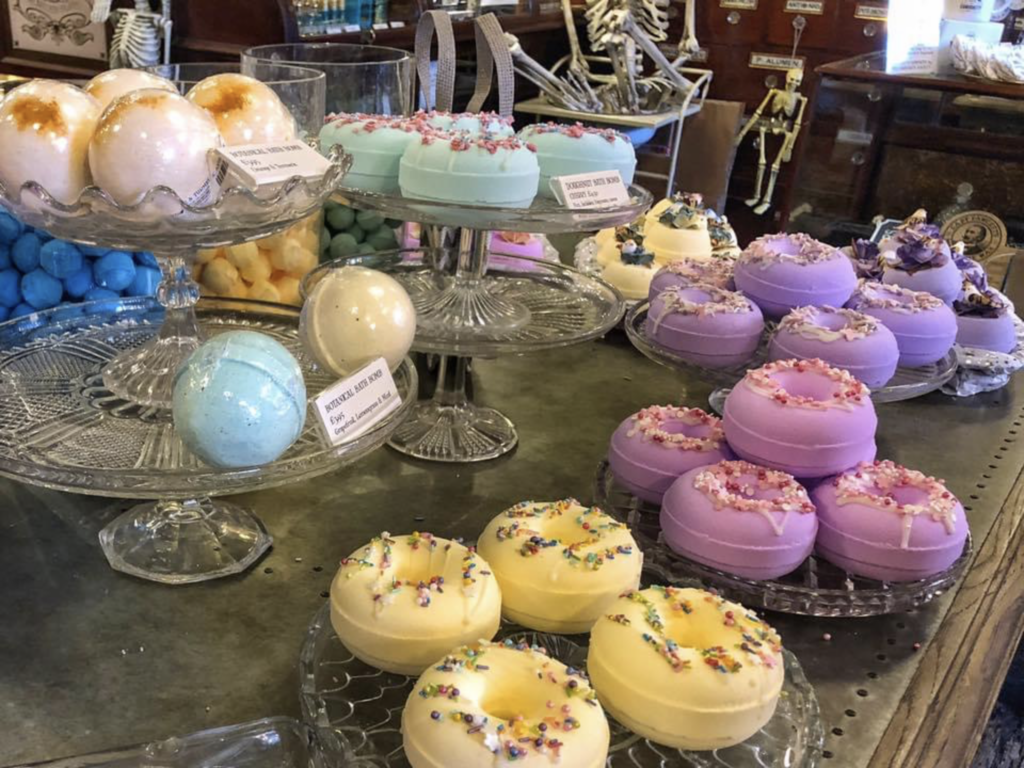
And these bath bombs are probably not as yummy as they look!
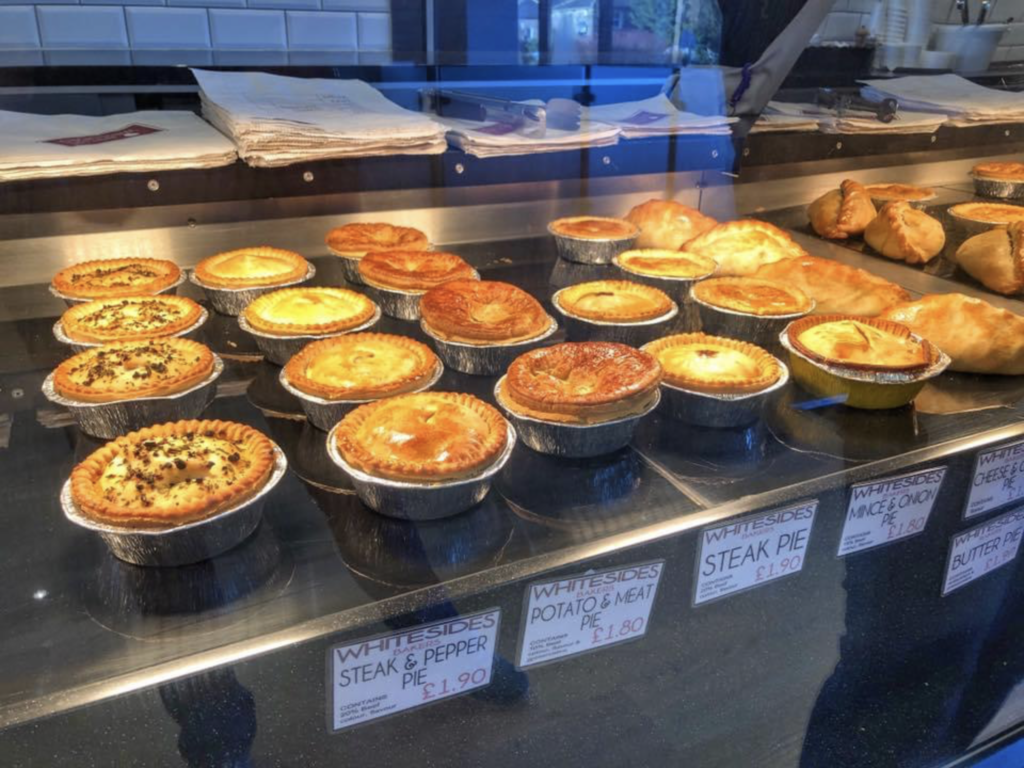
Fortunately, Sue made sure we had our fill of traditional minced meat and potato pies.

Naturally (and fortunately) there is always a pub nearby with a cozy fire going.
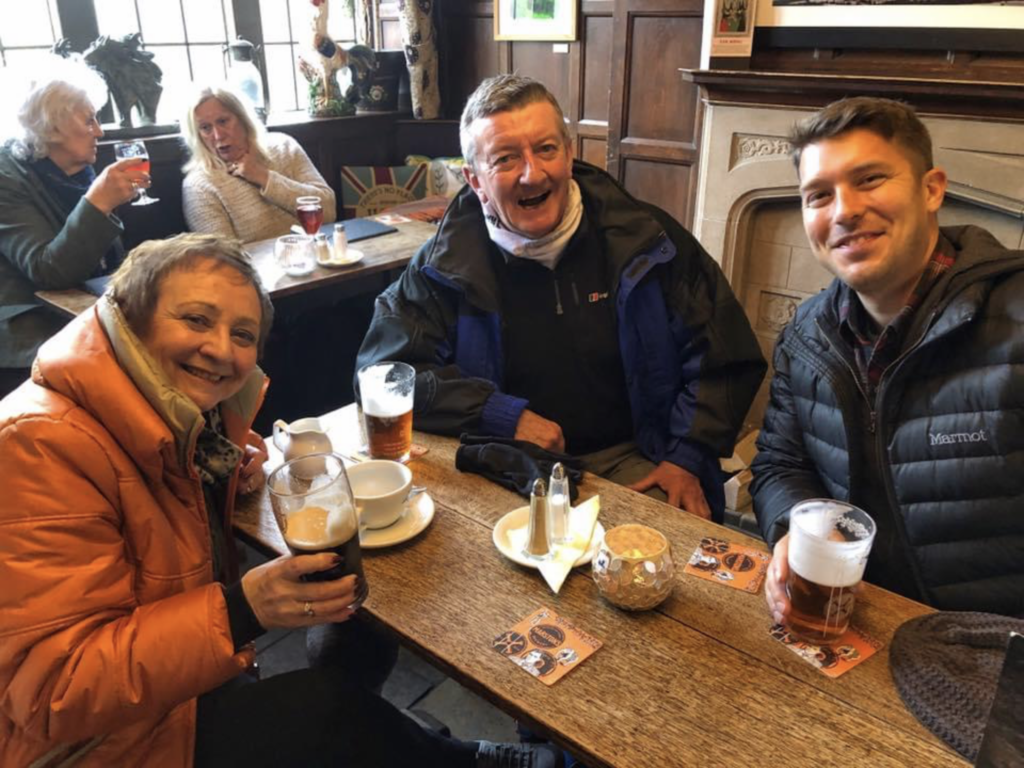
Or two…
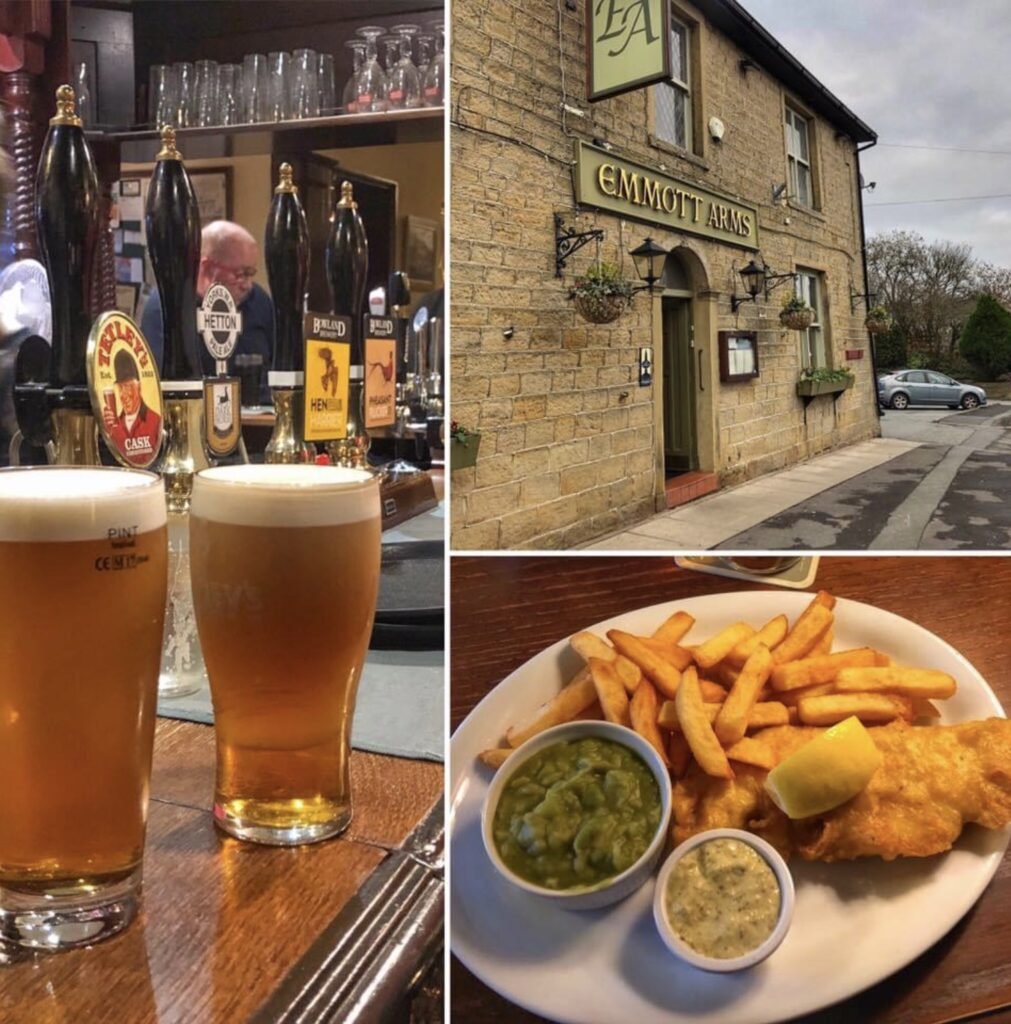
Or three… (and don’tcha forget yer mushy peas!)
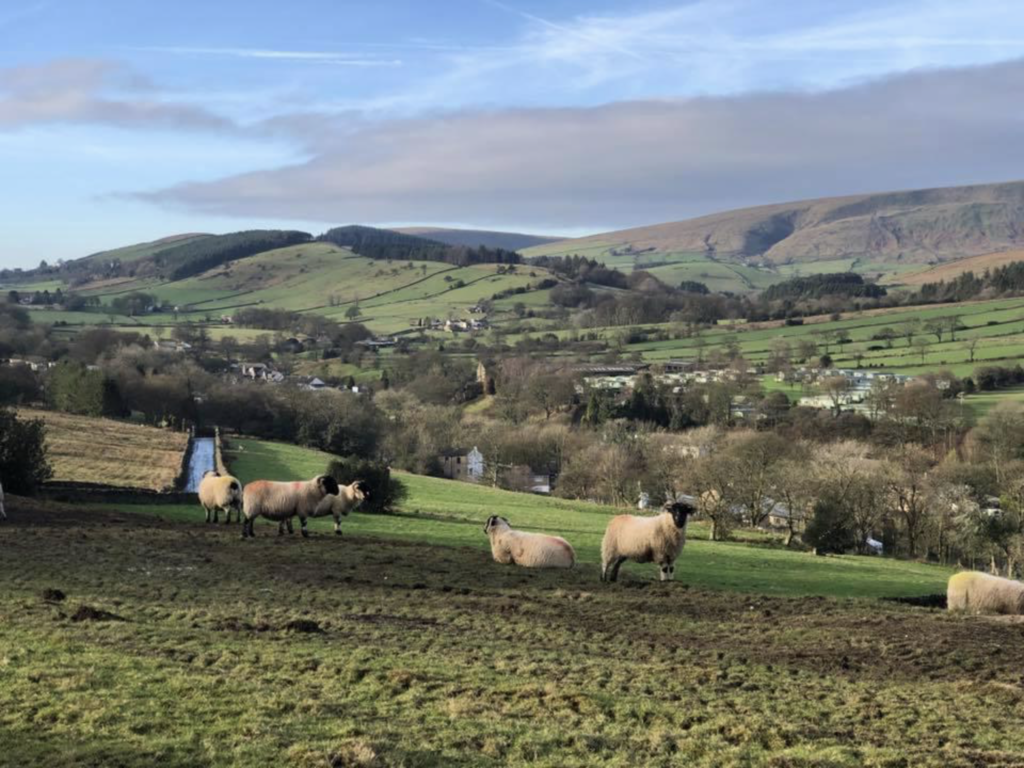
Downham & Nearby Villages
On another day, the Catlows took us out for a day exploring other nearby villages. The scenery was phenomenal and we even found a bit of that mythical English sunshine!
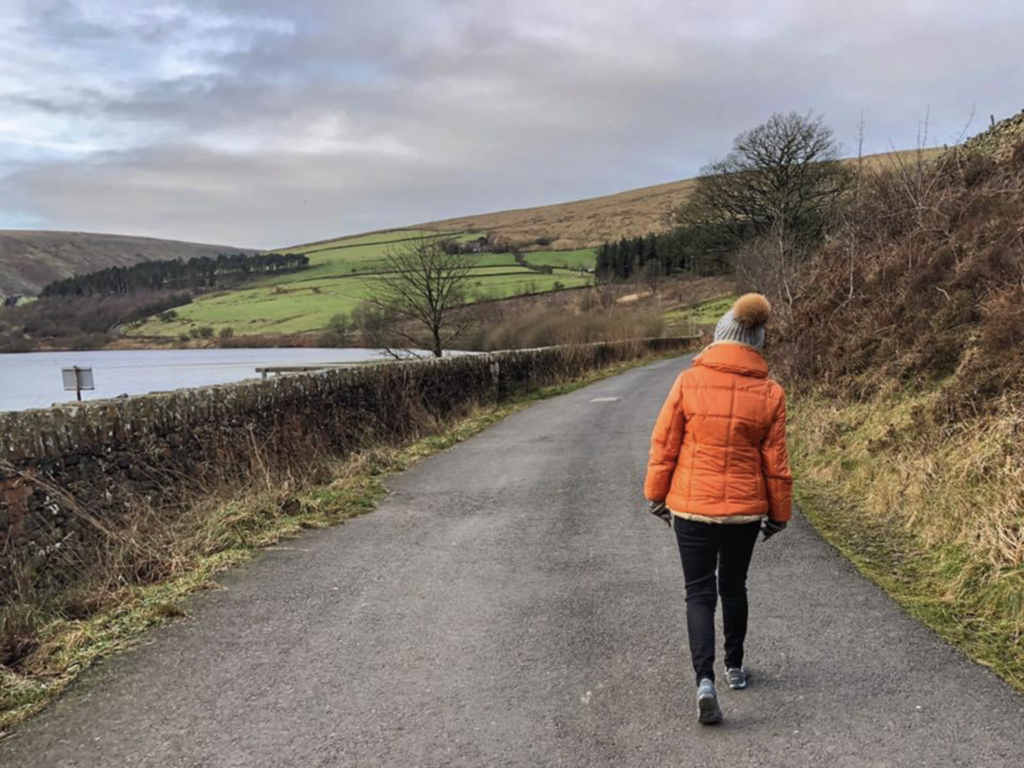
Sue strutting her stuff on the footpath!
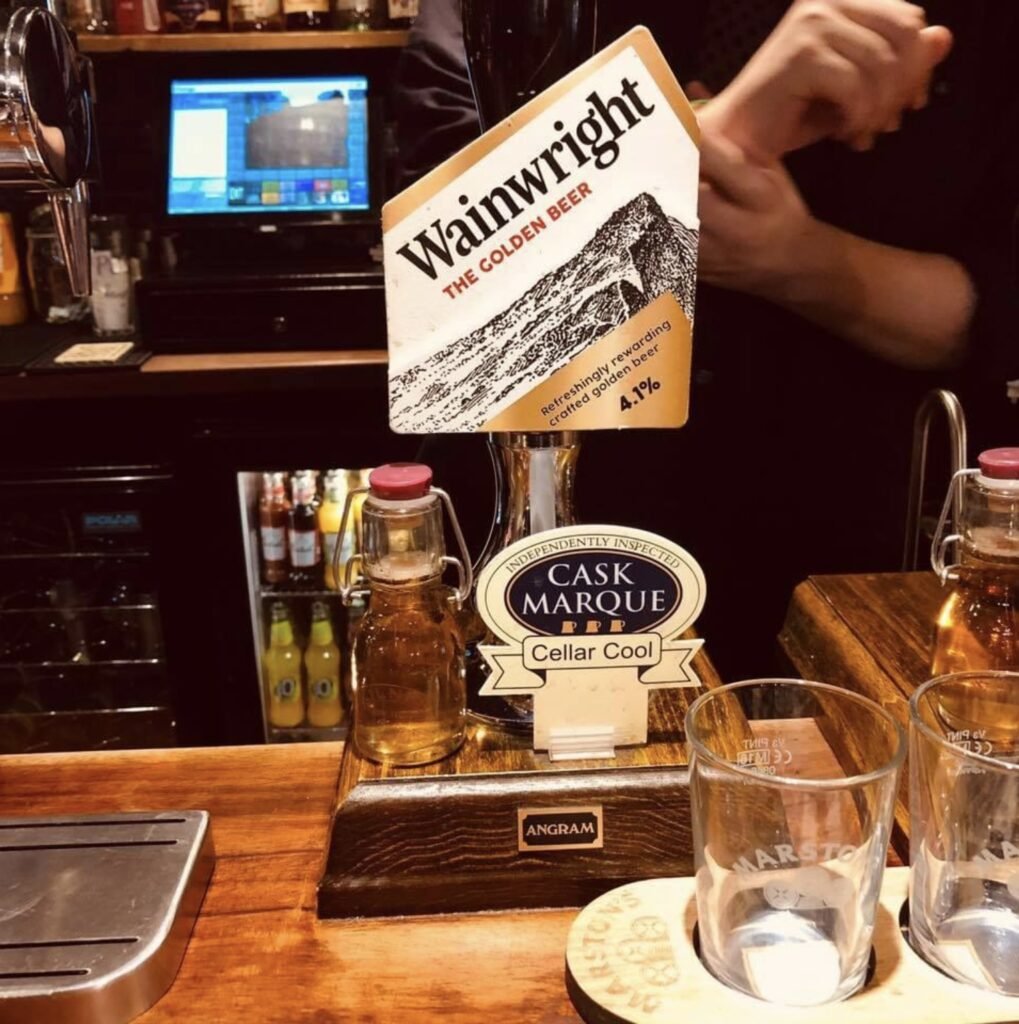
With all the footpaths it’s easy to work up yer thirst. Time to hole up with a pint in a pub!
Interestingly, many pubs have a small pour next to their taps so you can check the color and style before you order!
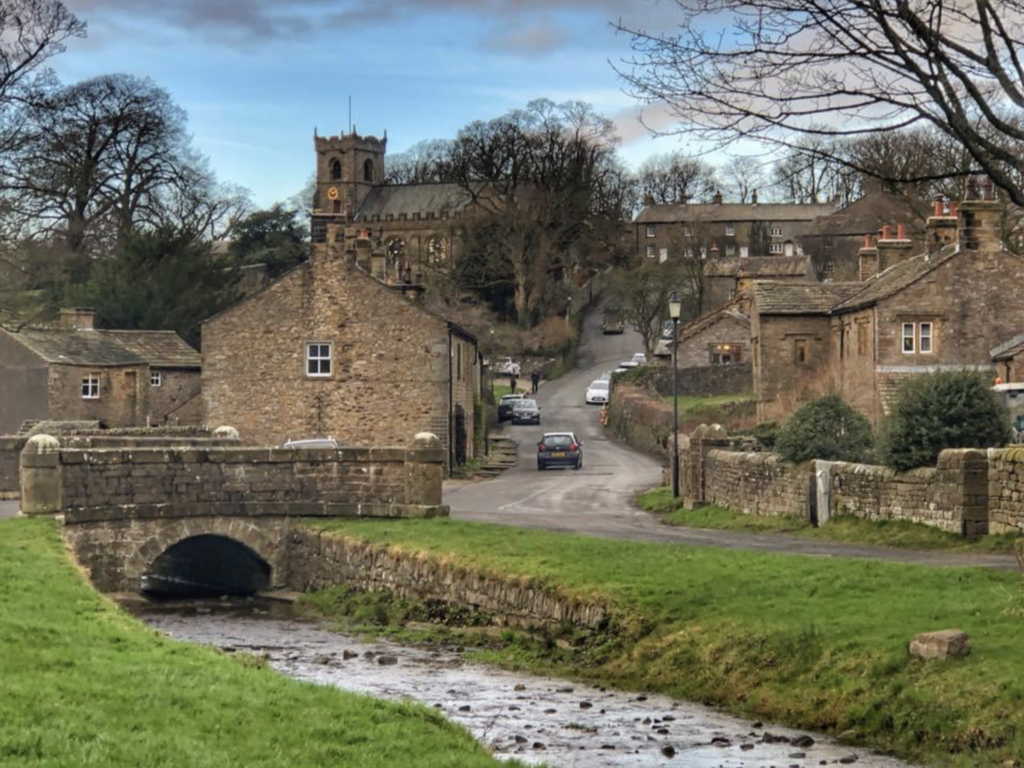
The village of Downham. The village of 156 inhabitants does not allow overhead electricity lines or satellite dishes, which makes the making the village a very enticing location for filming period dramas.

The post office
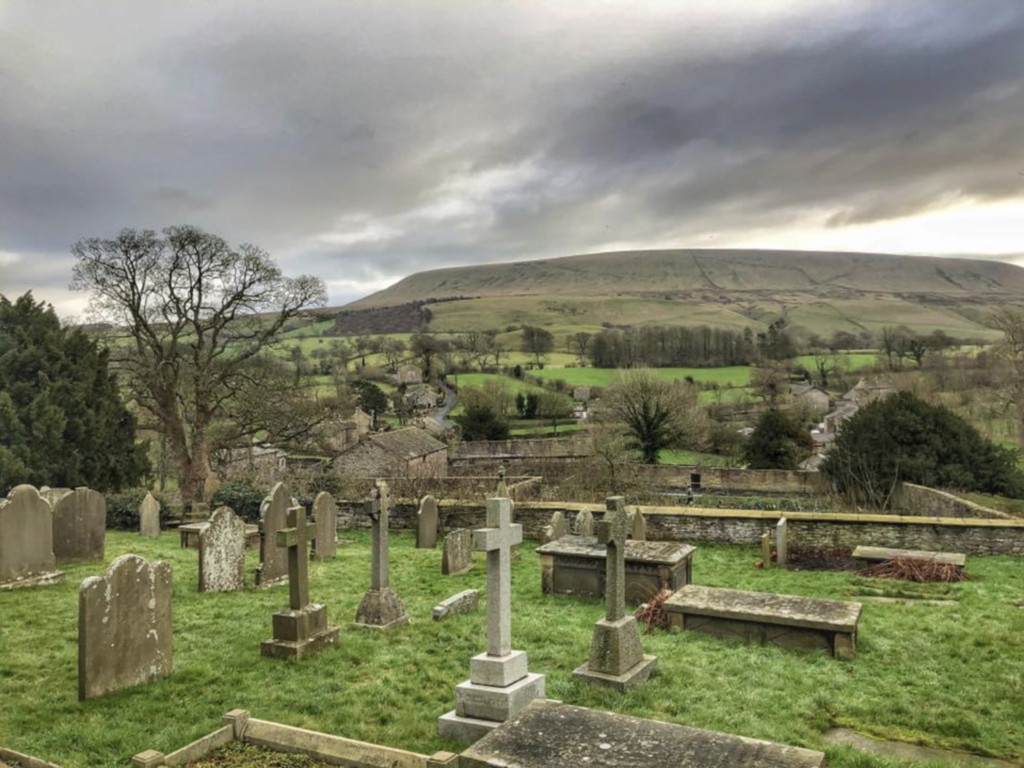
The cemetery as seen from St. Leonard’s Church.
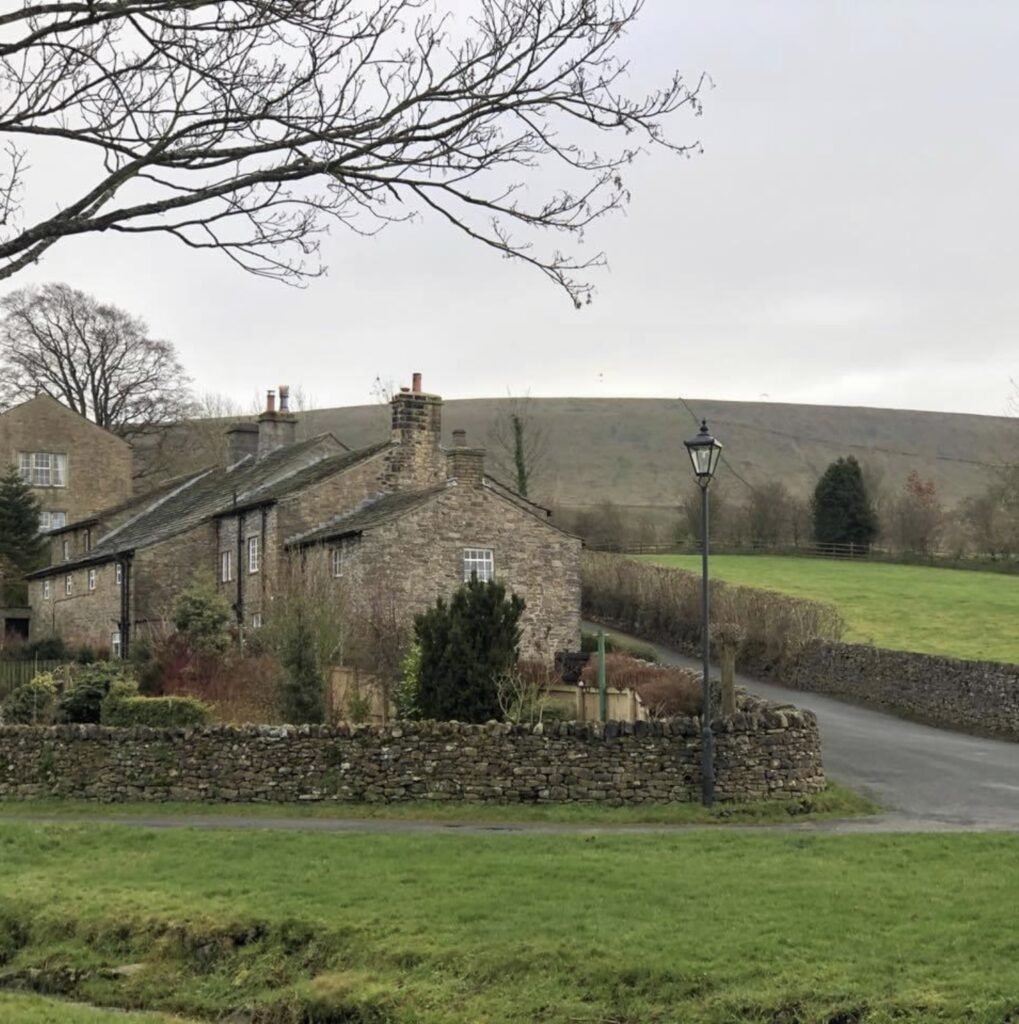
Street scenes.
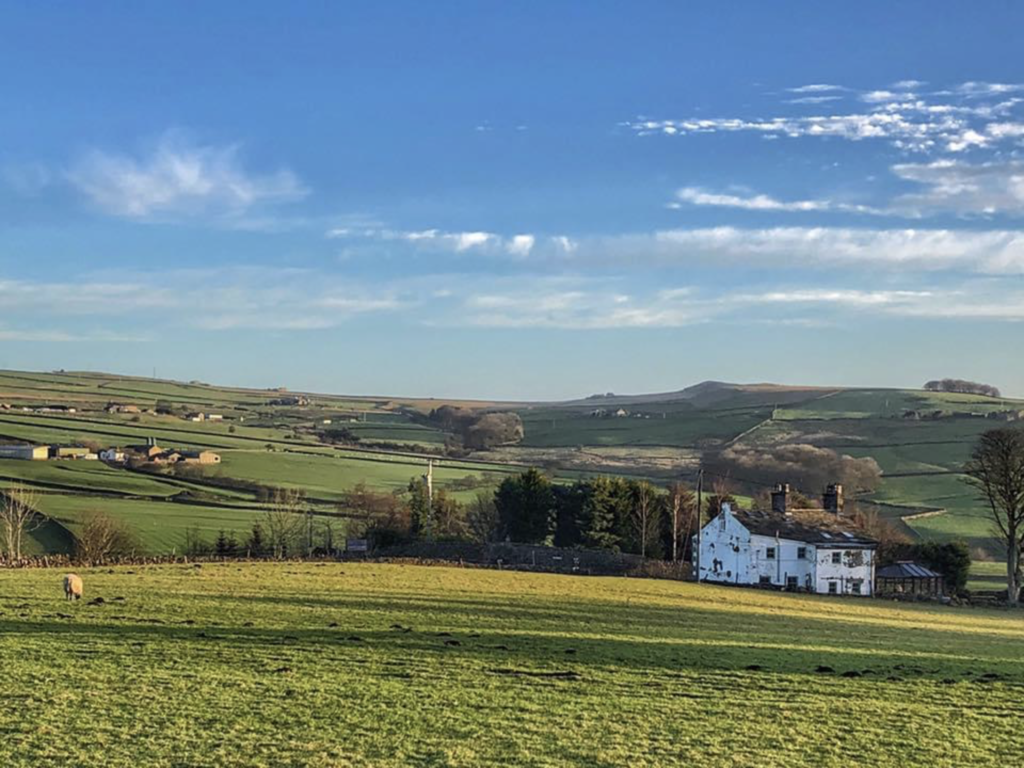
Mandy enjoys the countryside on a morning run.
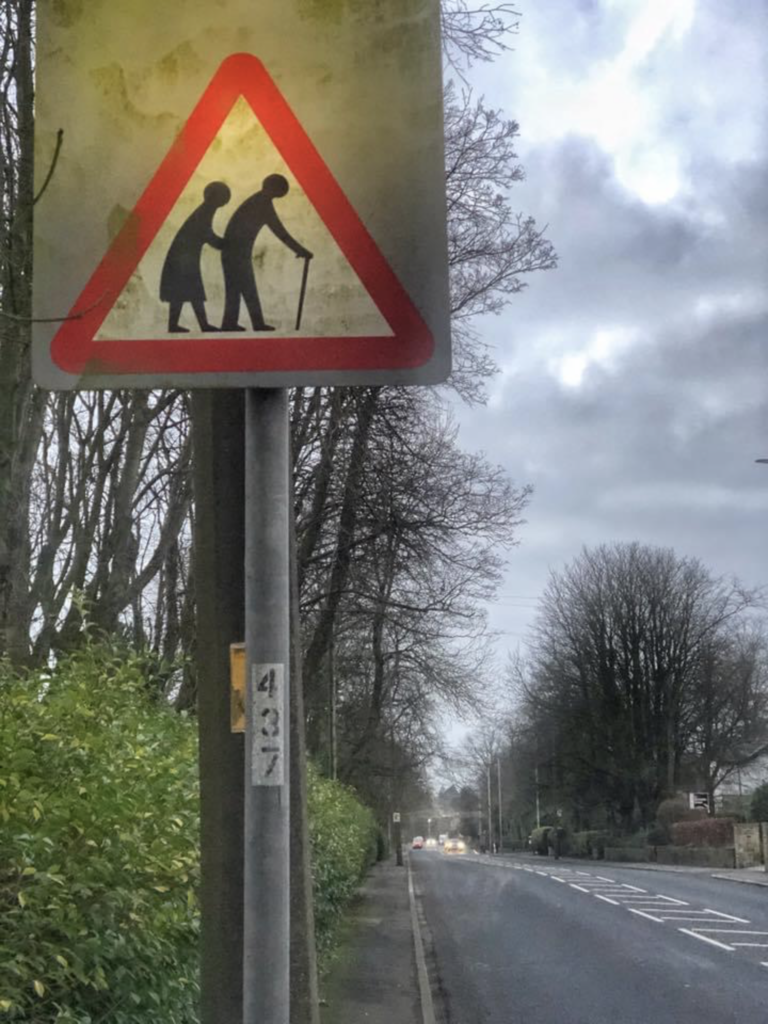
We love the way the UK seems to respect and take care of their elderly.
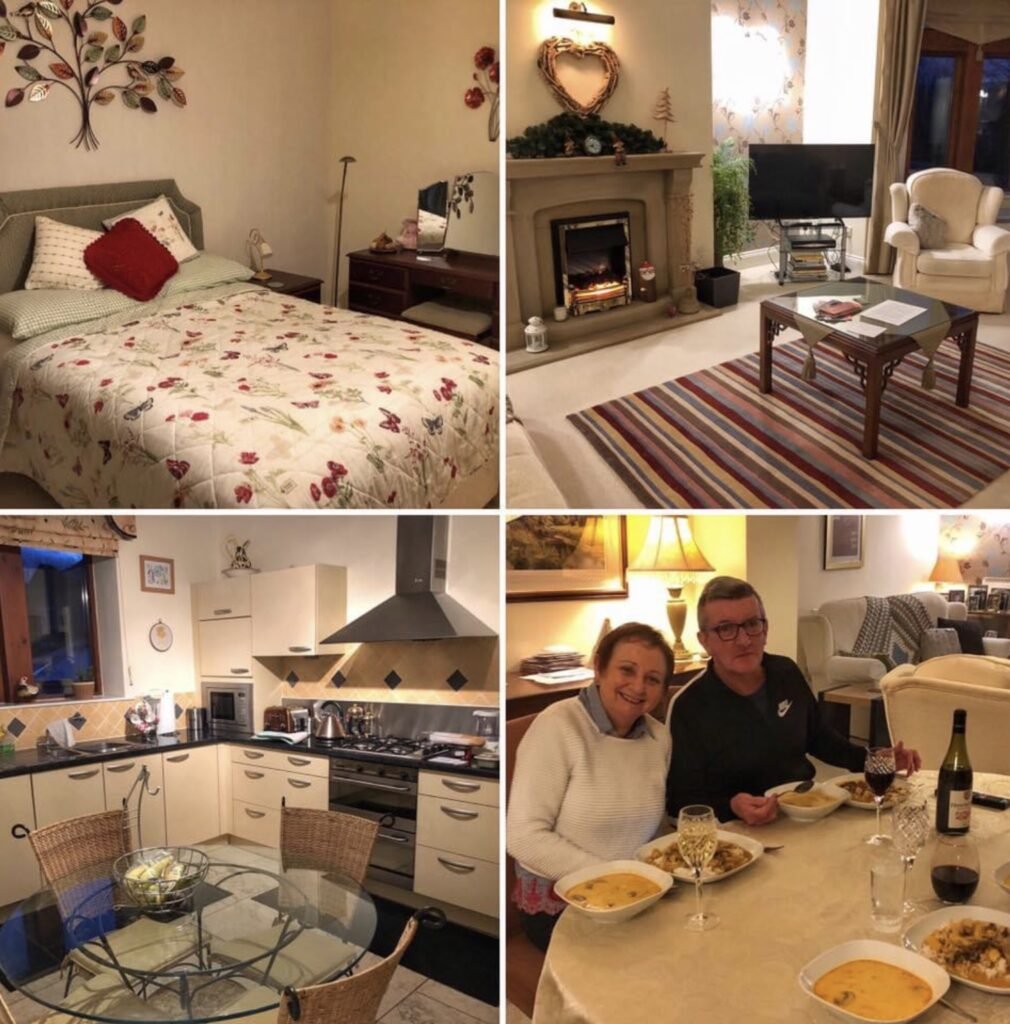
Huge thanks to the Catlow family for getting us well off the beaten path and into a wonderful English country retreat. Cheers!

